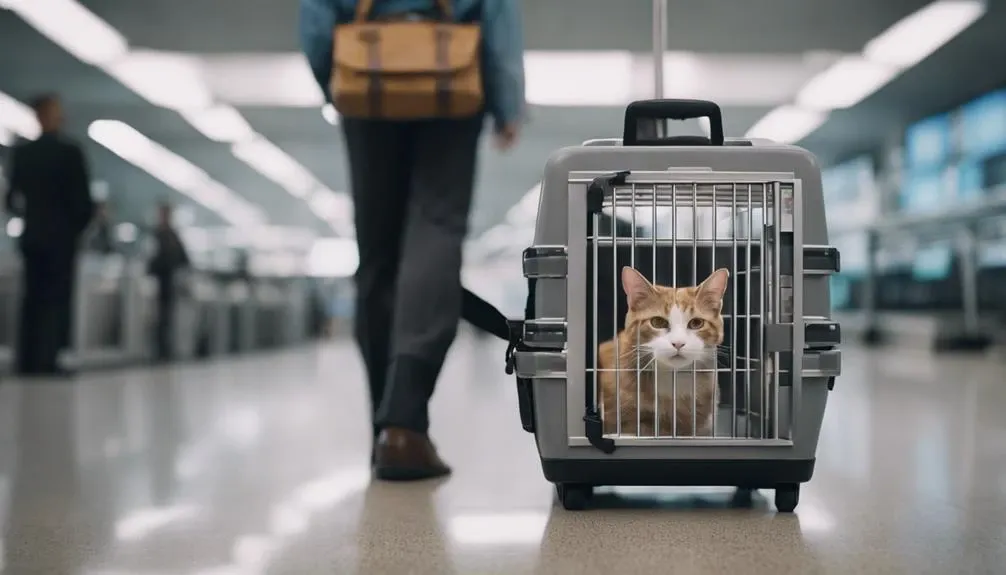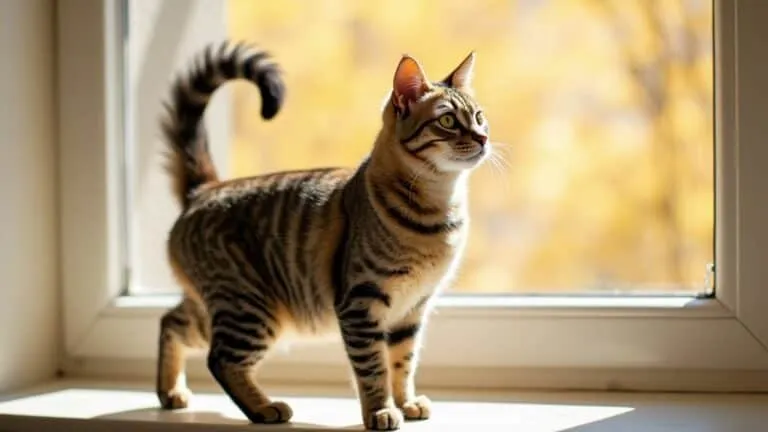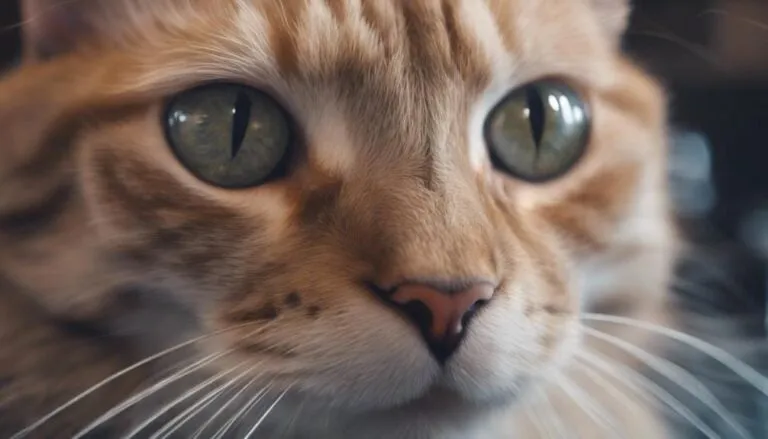The Best Fluffy Pancakes recipe you will fall in love with. Full of tips and tricks to help you make the best pancakes.

Imagine taking your cat on a plane is like embarking on a delicate balancing act in the sky. To ensure a successful journey with your feline friend, there are key tips and tricks you must know.
From acclimating your cat to the carrier to understanding airline regulations and preparing for potential in-flight scenarios, each step is crucial.
As you navigate the complexities of traveling with a pet, these essential guidelines will help you master the art of flying with your furry companion.
Key Takeaways
- Budget for in-cabin or cargo fees to ensure smooth travel with your cat.
- Obtain vet clearance and necessary documents to comply with airline regulations.
- Familiarize yourself with specific airline policies to avoid surprises while traveling.
- Prepare for international travel by checking regulations, vaccines, and completing required paperwork.
Know Your Cat's Travel Options
When traveling with your cat, it's essential to be aware of the various travel options available to ensure a smooth and stress-free journey. For cats weighing around 20 pounds or less, they can typically travel in the cabin under the seat on most airlines. However, it's crucial to check with the specific airline for the under-seat dimensions as they can vary between different aircraft. Opting to have your cat in the cabin is usually a more affordable and safer choice compared to transporting them in cargo.
Although some airlines allow cats to travel as cargo in a pressurized compartment or as checked bags, it's generally advised against due to potential risks. If you prefer professional assistance, pet shipping companies like the International Pet and Animal Transportation Association can help with making travel arrangements for your feline companion. Understanding the different options available for traveling with your cat allows you to make an informed decision that prioritizes their comfort and safety during the journey.
Understand the Costs Involved
Understanding the costs involved in traveling with your cat, whether in-cabin or as cargo, is crucial for effective planning and budgeting. When preparing to take your feline friend on a plane, consider the following:
- Pet Fees: In-cabin fees for flying with a cat typically range from $95 to $125 each way on major U.S. airlines.
- Checking as Cargo: Opting to check your cat as cargo can cost around $200 each way on some airlines.
- Pre-flight Vet Visit: Additional costs may include a pre-flight vet visit to ensure your cat is healthy and up to date on vaccinations.
- Cat Carriers and Space Constraints: In-cabin cats may require you to check your roll-aboard bag due to space constraints, so investing in a suitable cat carrier is essential.
Understanding these costs and budgeting accordingly will help you plan for a smooth and stress-free air travel experience with your beloved cat.
Research Health Requirements and Rules
Researching health requirements and rules for flying with your cat is crucial before embarking on your journey. Check airline regulations, obtain veterinary clearance, and ensure you have all necessary documents in order to comply with travel regulations.
Being prepared in advance will help make the process smoother and ensure a safe and stress-free trip for both you and your feline companion.
Check Airline Regulations
Before booking your flight, carefully review the airline regulations to ensure you meet the specific health requirements and rules for traveling with your cat. Different airlines have varying rules, so it's crucial to do your research. Here are some key points to consider:
- Health Requirements: Vaccinations, health certificates, and age restrictions may vary.
- Pet Classification: Some airlines treat cats as carry-on items, while others have specific guidelines for in-cabin or cargo hold travel.
- Carrier Specifications: Understand the airline's carrier dimensions to ensure compliance for in-cabin travel.
- Rules and Regulations: Familiarize yourself with the airline's policies to avoid any surprises on travel day.
Obtain Vet Clearance
To ensure a smooth and safe travel experience for your cat, obtaining vet clearance is essential for meeting the health requirements and rules associated with flying. Before you take your cat on a plane, make sure to obtain a health certificate from a veterinarian. Research specific airline regulations, including any age restrictions or vaccination requirements your cat must meet. It's crucial to verify that your cat is in good health and fit to fly according to airline rules. This vet clearance process ensures that your furry companion is ready for the journey ahead. Here is a simple table to guide you through the vet clearance process:
| Vet Clearance Checklist | Details |
|---|---|
| Health Certificate | Obtain from a vet |
| Age Restrictions | Check airline regulations |
| Vaccination Requirements | Meet specified criteria |
| Good Health | Ensure your cat is healthy |
| Fit to Fly | Confirm with the vet |
Pack Necessary Documents
Ensure your cat's safe travel by meticulously researching the health requirements and rules for flying, especially when it comes to packing necessary documents. When preparing to take your cat on a plane, consider the following:
- Research Health Requirements: Check what health documents and certifications your cat needs for air travel.
- Understand Airline Rules: Familiarize yourself with specific airline regulations to ensure a smooth journey.
- Destination Health Documents: Some locations may require additional health paperwork for your cat; be aware of these requirements.
- Preparation is Key: Have all necessary documents organized and easily accessible to breeze through the security checkpoint without delays.
Choose the Right Carrier
When selecting a carrier for your cat to take on a plane, it is crucial to choose a soft-sided option that fits under the seat in front of you. This ensures your furry friend remains safe and secure throughout the journey. Look for carriers that are escape-proof, well-ventilated, and meet airline size requirements. A secure closure mechanism is essential to prevent any mishaps during travel. Your cat's comfort and security should be a top priority when choosing the right carrier.
| Cat Carrier Features | Description |
|---|---|
| Soft-Sided | Allows flexibility and comfort for your cat. |
| Under the Seat | Fits conveniently in the cabin area. |
| Escape-Proof | Prevents your cat from getting out. |
| Well-Ventilated | Ensures proper airflow inside the carrier. |
| Secure Closure | Provides added safety and peace of mind. |
Selecting the appropriate carrier will make the flight more enjoyable for both you and your feline companion.
Prepare for International Flights
Research your specific airline's policies regarding international cat travel requirements, ensuring you have the necessary health documents and vaccines.
Some countries may have additional regulations, such as requiring rabies titers for cats.
Consider utilizing professional services to help navigate the complexities of international travel documentation for your feline companion.
International Flight Regulations
When preparing to take your cat on an international flight, it's crucial to consider the following regulations and requirements:
- Check the airline's policy: Some airlines may not allow pets on international flights, so verify their regulations beforehand.
- Health documents and vaccinations: International travel with a cat may require specific health documents and vaccinations depending on the destination country.
- Destination country regulations: Be prepared to comply with the rules and regulations of the destination country when traveling internationally with your cat.
- Consult with the U.S. Department of Agriculture's Animal and Plant Health Inspection Service for detailed guidelines on flying with pets internationally.
Necessary Travel Documentation
Before embarking on an international flight with your cat, ensure you have all the necessary travel documentation in order. International travel with a cat often requires specific health certificates and paperwork. Be sure to check the U.S. Department of Agriculture's regulations for international pet travel to understand the requirements.
Some countries have strict entry rules for pets, including specific vaccines that must be administered. Make sure all necessary paperwork, such as health certificates, is completed accurately and up to date before your trip. Contact the destination country's embassy or consulate to get detailed information on pet travel regulations.
This preparation will help you navigate airport security smoothly and ensure a hassle-free journey for both you and your feline companion.
Consider Emotional Support Animal Status
Considering the emotional support animal status for your cat when planning air travel is crucial for a smooth and stress-free journey. When it comes to flying with your cat, especially as an emotional support animal (ESA), there are important factors to keep in mind:
- Check Airline Policies: Ensure that the airline you're flying with allows cats in the cabin, especially as ESAs. Each airline has specific rules and requirements for traveling with ESAs.
- Obtain Proper Documentation: Make sure you have all the necessary documentation for your cat to be recognized as an ESA. This may include a letter from a licensed mental health professional certifying the need for an ESA.
- Ensure Good Behavior: Your cat must be well-behaved and under control at all times during the flight. Unruly behavior can lead to issues with airline staff or other passengers.
- Be Prepared: Plan ahead and pack everything your cat might need during the flight, including food, water, toys, and a comfortable carrier. Being prepared can help alleviate stress for both you and your feline companion.
Tips for Check-In
When preparing for check-in with your cat, ensure you have all necessary documents, like health certificates, easily accessible.
Make sure your cat's carrier meets the airline's size and weight requirements to avoid any issues during check-in.
Be ready to pay the airline's pet travel fee as part of the check-in process to ensure a smooth journey for you and your feline companion.
Check-In Documents Needed
To ensure a smooth check-in process for your cat's plane travel, remember to have all necessary health certificates and vaccination records readily available. When preparing for check-in, keep the following tips in mind:
- Domestic Travel: Have your cat's health certificate and vaccination records in hand.
- International Travel: Check specific vaccine requirements and health documents needed.
- Additional Certifications: Some destinations may require rabies titers and extra health certifications.
- Professional Assistance: Consider using fee-based services to guarantee compliance with international travel regulations.
Pet Carrier Requirements
Ensure that your pet carrier meets the specific size and material requirements set by the airline for a smooth check-in process. Airlines mandate that carriers fit under the seat in front of you, so opt for a soft-sided cat carrier for flexibility. These carriers are comfortable for your pet and typically meet airline guidelines.
Adequate ventilation is crucial for your cat's well-being during the flight, so choose a carrier with mesh panels. Additionally, ensure the carrier has secure closures to prevent any accidental escapes.
Navigate Security Screening
During security screening at the airport, your cat's carrier will pass through the X-ray machine, while you'll need to carry your cat through the human screening device. To navigate security screening smoothly, follow these essential tips:
- Cat Carrier Screening: Ensure your cat carrier goes through the X-ray machine as part of the security procedures.
- Carrying Your Cat: Carry your cat through the human screening device while holding them securely to prevent any sudden movements.
- Harness and Leash: Have your cat wear a harness with a leash during screening for added security and control.
- Follow Specific Procedures: Adhere to the specific screening procedures outlined by the airport authorities to make the process easier for both you and your feline companion.
Ensure Comfort on Flight Day
On the day of your flight, consider limiting your cat's food intake to prevent motion sickness and discomfort. It's essential to provide water and bathroom breaks for your cat before boarding the plane to ensure hydration and comfort during the journey.
Throughout the flight, monitor your cat's behavior closely for any signs of stress or anxiety that may require attention. Make sure the carrier your cat is in has proper ventilation and security to keep them safe and comfortable while flying in the cabin.
Upon arrival at your destination, help your cat adjust to the new environment to ease any travel-related stress. Follow the airline's privacy policy and guidelines for flying with a cat to make the experience as smooth as possible.
Bonus: Using Points and Miles for Travel
Consider maximizing your travel experience by exploring the option of using points and miles to cover pet travel expenses when flying with your cat. When it comes to pet travel fees, some airlines allow you to utilize your airline loyalty program's redemption options for significant savings. Here's how you can make the most of your points and miles to save on expenses:
- Check Your Airline Loyalty Program: Look into your airline loyalty program to see if they offer redemption options for pet travel expenses.
- Offset Costs: Utilizing points or miles can help offset the cost of flying with your cat, making it a more affordable option.
- Valuable Resource: Points and miles can be a valuable resource, especially for frequent travelers with pets, helping them save on overall travel expenses.
- Earn and Redeem Strategically: Earn and redeem points strategically to save on pet travel expenses and make the most out of your travel rewards.
Frequently Asked Questions
How Do I Prepare My Cat for a Flight?
To prepare your cat for a flight, make sure they're comfortable with the carrier, use calming techniques like familiar scents and toys, consult your vet for approval, ensure adequate hydration, reduce noise, and follow airline regulations.
What Is the Best Seat on a Plane With a Cat?
For the best in-cabin experience when flying with your cat, opt for a middle seat. This choice provides ample space for your cat carrier under the seat, ensuring comfort and ease during the journey.
How Do I Carry My Cat Through Tsa?
When carrying your cat through TSA, ensure your pet carrier meets regulations. At the security checkpoint, be ready to remove the harness. Request a private screening room for calmness. Use treats for good behavior.
Can a Cat Sit With You on a Plane?
Yes, your cat can sit with you in the cabin on a plane. Ensure the carrier meets size requirements, consider your pet's comfort, check airline pet policies, be cautious of sedation risks, and be mindful of any breed restrictions.
Conclusion
In conclusion, with proper planning and preparation, taking your cat on a plane can be a stress-free experience for both you and your furry friend.
Remember to research airline requirements, choose the right carrier, and ensure your cat's comfort throughout the journey.
By following these essential tips, you can make traveling with your cat a safe and enjoyable adventure.
Safe travels!








